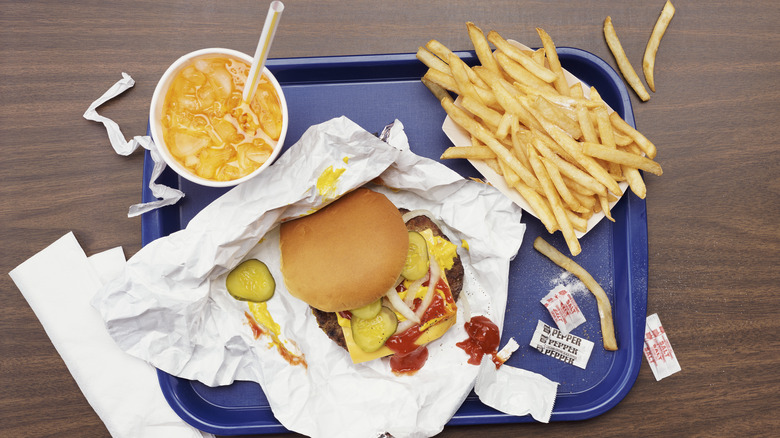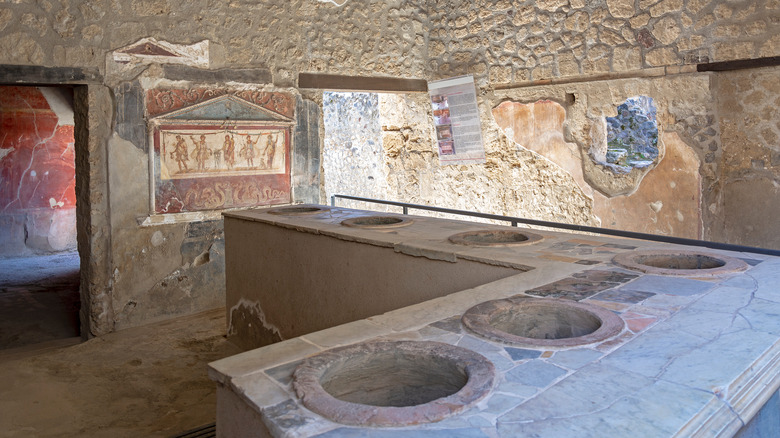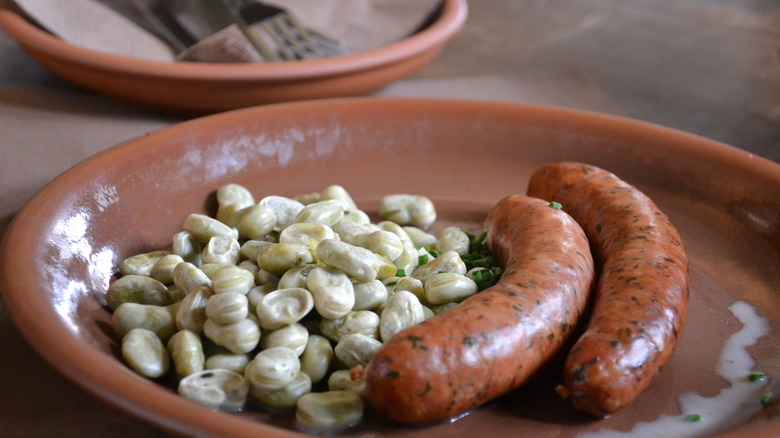The Origins Of Fast Food In The Ancient Roman Empire
If you had to guess when and where fast food first appeared in culinary history, 20th-century America seems like a pretty solid guess. While iconic restaurants like White Castle, In–N–Out, McDonald's, and Culver's have certainly earned America an esteemed role in the history of fast food, the tradition of stopping at a restaurant for a quick, hot meal stretches back much farther than these chains. Farther back than America itself, in fact.
Archaeological excavations of the ancient city of Pompeii reveal that the innovations of fast food are another area of modern cuisine that has unexpectedly ancient origins – quite similar to French toast, actually. While the food and format of these restaurants weren't what we're used to, the general model was the same. Known by ancient Romans as thermopolia, these businesses prepared and sold a variety of meals so that customers could find sustenance without having to cook it themselves — which was not only a convenience but also a necessity for the many families who didn't have kitchens at home.
The thermopolium in ancient Roman society
While wealthy Romans had kitchens and enslaved staff to cook elaborate meals for them at home, many middle- and lower-class families didn't have a dedicated place to prepare food in their homes. Because of that, thermopolia — a word with Greek origins that simply identified these establishments as shops that sold hot things — were essential to the survival of the community, providing many people with their daily meals.
These fast food restaurants might be simple neighborhood stands selling a few simple items, small rooms opening to the street and serving to-go meals, or larger establishments with beautifully frescoed walls offering seating areas for folks to enjoy their meals. Each dish was kept in a terracotta pot called a dolia, which was then placed in large holes built into the thermopolium countertops. Some shops had only one counter with enough room for a small selection of dishes — while larger shops had counters that wrapped around the space to maximize their offerings.
Although thermopolia served an essential function in ancient Roman society, they were often looked down upon, and considered hot spots for disreputable folks — thugs, thieves, and those who overindulged in the wine typically sold at such establishments. Emperor Claudius even tried to have them shut down, as their poor reputation was seen as more of a threat than their benefits could justify.
What did fast food look like in ancient Rome?
Rather than the burger drive-thrus we most strongly associate with fast food today, the thermopolium was more akin to today's fast casual bowl restaurants. A warm, spiced wine called calida, as well as things like cooked legumes, eggs, various meats, cheeses, and baked goods like pastries and bread, were all common offerings.
Despite the thousands of years that stand between ancient Rome and us, we do have records of some popular recipes enjoyed at thermopolia. One, in fact, could be considered an ancient relative of the contemporary hamburger: Isicia omentata. After combining ground veal, wine-soaked breadcrumbs, pine nuts, and anchovy sauce, the mixture was formed into meatballs, covered in caul fat and a red wine reduction, then browned and served with grape syrup. While a far cry from today's Big Mac, this meatball combines sweet and savory elements in a way that certainly laid the foundation for the fast foods we crave today.



